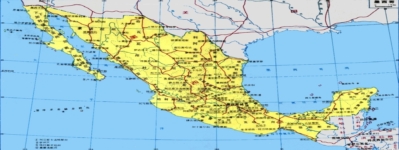The Symbolism of Wings in Egyptian Art and Modern Symbols #22
1. Introduction to the Symbolism of Wings in Human Culture
Wings have long captivated human imagination, appearing across diverse mythologies and artistic traditions worldwide. From the angelic wings in Christian art to the mythic feathers of gods and heroes, wings symbolize more than just the ability to fly. They serve as powerful icons of transcendence, protection, and divine authority. This article explores the journey of wing symbolism from ancient Egypt—where it embodied divine power and spiritual elevation—to contemporary culture, where it continues to evoke aspirations of freedom and hope.
Jump to: Transition from Ancient to Modern Symbols
Jump to: Deep Dive: The Eye of Horus as a Modern Example
2. Wings in Ancient Egyptian Art and Religion
a. The role of wings in Egyptian mythology and divine representation
In ancient Egypt, wings were more than decorative elements; they were integral to understanding divine authority. Gods such as Horus, Isis, and Nephthys were frequently depicted with wings, symbolizing their ability to transcend the mortal realm, offer protection, and embody divine power. For example, Horus, often represented as a falcon, was associated with the sky, and his wings signified his sovereignty over the heavens and protection of the pharaoh.
b. The symbolism of wings in funerary art and the afterlife (e.g., goddess Nephthys, Isis)
Wings also played a vital role in funerary contexts, representing the soul’s journey and divine protection in the afterlife. Deities like Isis and Nephthys, often depicted with expansive wings, enveloped the deceased, symbolizing comfort and divine guardianship. The wings conveyed the hope of rebirth and the soul’s ascent to eternity, illustrating how the Egyptians believed in divine oversight in life’s transition and beyond.
c. The Eye of Horus as a protective symbol—connection to divine protection and perception
While not a wing itself, the Eye of Horus embodies the divine perception and protection associated with winged deities. Its stylized form often evokes the image of an eye with markings reminiscent of feathers or wings, symbolizing heightened perception and safeguarding against evil. This ancient emblem has persisted into modern times as a talisman of health, protection, and spiritual insight.
3. The Material and Craftsmanship Behind Egyptian Art and Symbols
a. Techniques used in creating Egyptian blue pigment and gold artifacts—link to symbolism through craftsmanship
Egyptian artisans mastered techniques such as faience glazing for vibrant blue hues and sophisticated goldsmithing to craft artifacts imbued with spiritual meaning. The meticulous craftsmanship in creating these materials reflected the importance of the symbols they adorned, reinforcing divine authority and eternal life. For instance, the golden funerary masks and amulets often featured wing motifs, emphasizing the divine status and protection conferred by the craftsmanship itself.
b. The significance of animal mummies and their association with gods and symbolic wings (e.g., falcon-headed Horus)
Animal mummies, such as falcons representing Horus, exemplify the connection between physical materials and divine symbolism. These mummies were often placed in coffins decorated with wing motifs, symbolizing the divine protection and flight of the soul. The careful preservation and symbolic decoration of these artifacts highlight the Egyptians’ belief in the spiritual significance of materials and craftsmanship.
c. How material choices and craftsmanship reflect spiritual and symbolic meanings
Materials like lapis lazuli, gold, and faience were chosen not only for their beauty but also for their spiritual resonance. Gold, symbolizing the flesh of the gods, was used extensively in divine representations, while lapis lazuli was associated with the heavens. The craftsmanship involved in creating winged symbols thus served as a bridge between the physical and spiritual worlds.
4. Transition from Ancient to Modern Symbols: The Evolution of Wings
a. The reinterpretation of wing symbolism in contemporary culture (e.g., logos, emblems)
Today, wings are ubiquitous in logos and emblems, symbolizing freedom, aspiration, and transcendence. Airlines, sports teams, and tech companies incorporate wing motifs to evoke speed, elevation, and protective qualities. These modern interpretations often draw inspiration from the deep historical roots of wing symbolism, adapting its core meanings to contemporary contexts.
b. The Eye of Horus in modern contexts—protection, health, and insight
In modern times, the Eye of Horus has transcended its ancient origins, becoming a popular symbol in jewelry, tattoos, and branding. It continues to represent protection, health, and insight, echoing its historical role as a divine safeguard. Its visual connection to winged imagery reinforces themes of divine perception and transcendence, making it a powerful symbol across cultures.
5. Comparative Analysis: Wings in Egyptian Art vs. Modern Symbols
| Aspect | Ancient Egyptian Art | Modern Symbols |
|---|---|---|
| Underlying themes | Protection, divine power, transcendence | Freedom, aspiration, speed, protection |
| Materials used | Gold, faience, lapis lazuli | Digital icons, metals, textiles |
| Cultural context | Religious and funerary rituals | Commercial, artistic, popular culture |
| Visual style | Intricate, symbolic, often stylized | Simplified, dynamic, often abstract |
6. Deep Dive: The Symbolic Significance of the Eye of Horus as a Modern Example
a. Historical origins and mythological background of the Eye of Horus
The Eye of Horus originates from Egyptian mythology, where Horus, the sky god, lost his left eye in a conflict with Set. The eye was magically restored by Thoth, symbolizing healing, restoration, and protection. As a result, the Eye of Horus became a potent emblem of health and safeguarding, often inscribed on amulets and artifacts to ward off evil.
b. Visual elements that evoke wings—perception, protection, and power
Modern representations of the Eye of Horus often include stylized lines and shapes reminiscent of wings, symbolizing divine perception and protection. This visual connection reinforces its role as a guardian figure, offering insight and safeguarding against harm. The iconography’s evolution illustrates how ancient symbols adapt to contemporary designs while preserving their core meanings.
c. The role in contemporary jewelry, tattoos, and branding as a protective symbol
Today, the Eye of Horus is frequently seen in jewelry, tattoos, and even brand logos, symbolizing protection, health, and spiritual insight. Its enduring visual appeal and deep roots in myth make it a timeless emblem of divine safeguarding, bridging ancient wisdom with modern aesthetics.
7. Exploring Non-Obvious Aspects of Wing Symbolism
a. The psychological impact of wing imagery—aspiration and hope
Wings evoke subconscious feelings of aspiration, hope, and the desire to transcend limitations. Psychologically, wing imagery can inspire individuals to pursue higher goals, embodying the human quest for freedom and spiritual elevation. This deep psychological resonance explains why wings remain powerful symbols across cultures and eras.
b. The scientific aspect: symbolism of flight and freedom in human consciousness
From a scientific perspective, flight symbolizes human ingenuity and the desire to conquer horizons. The concept of wings in human consciousness is linked to the innate longing for liberation from earthly bounds—a theme reflected in modern aircraft, space exploration, and even psychological literature on aspiration and growth.
c. Cultural variations—comparing Egyptian and other world traditions’ use of wing imagery
While Egyptian art emphasizes protection and divine transcendence, other cultures also utilize wing imagery. For example, Greek mythology features winged gods like Hermes, symbolizing communication and swiftness, and Christian angelic wings denote divine messengers. Despite differences, these variations highlight a universal human tendency to associate wings with higher powers, guidance, and aspiration.
8. Conclusion: The Enduring Power of Wings as Symbols Across Time
Throughout history, wings have served as a vital visual language bridging the divine, the mortal, and the aspirational. From the detailed craftsmanship of Egyptian artifacts to contemporary logos and jewelry, the symbolism persists, embodying protection, transcendence, and hope. Understanding this rich heritage enhances our appreciation of modern symbols and their deep roots in human culture. Recognizing the interconnectedness of ancient and modern visual language reveals how symbols evolve yet retain their core meanings, guiding us toward higher aspirations and spiritual insights.









